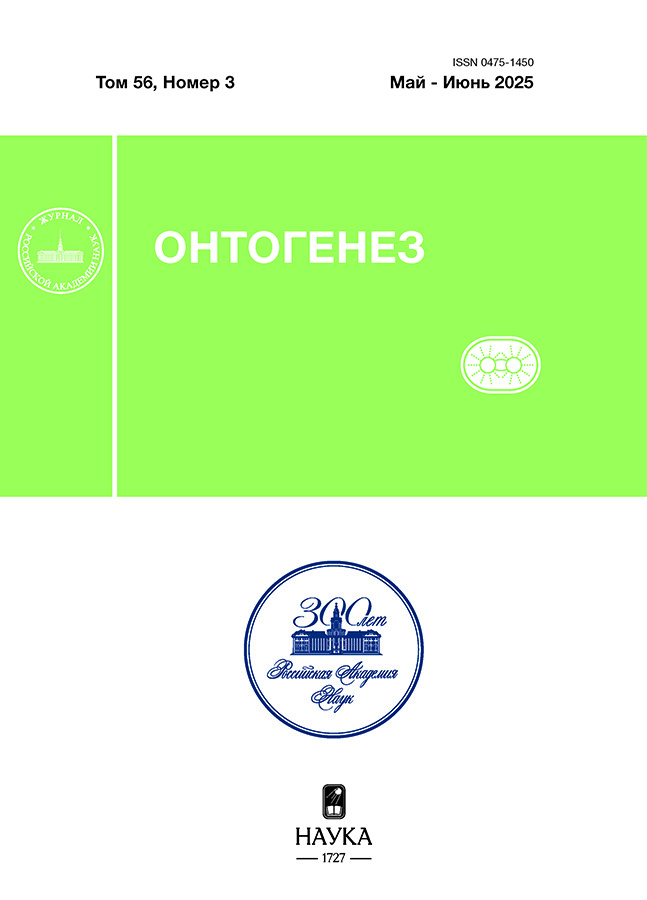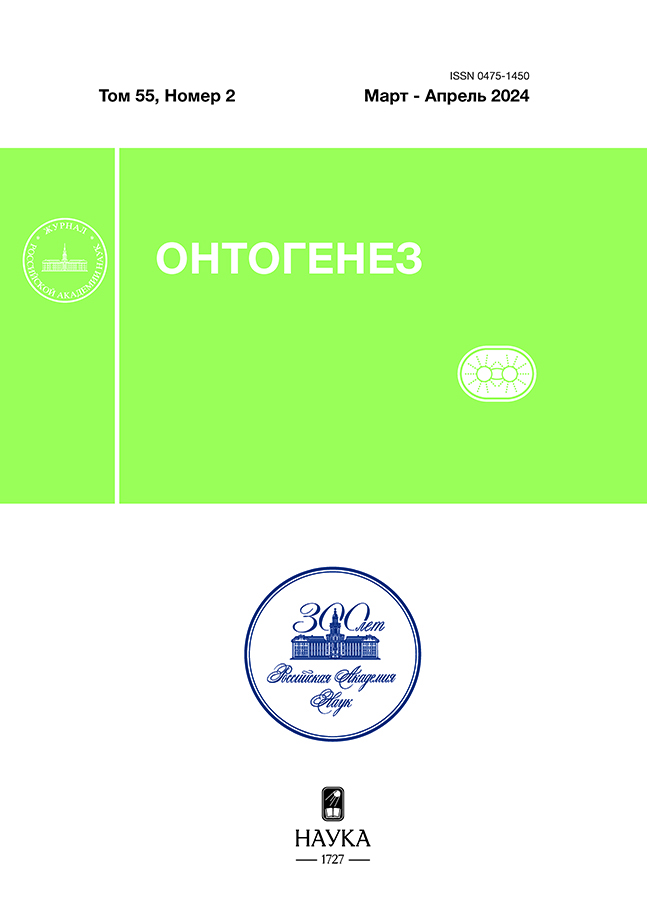Участие повторяющегося элемента генома GGAAA в дифференцировке пола у курицы
- Авторы: Сайфитдинова А.Ф.1,2, Жукова А.А.1,3
-
Учреждения:
- Российский государственный педагогический университет им. А. И. Герцена
- Санкт-Петербургский государственный университет
- ФГБНУ ВНИРО “ГосНИОРХ” им. Л. С. Берга
- Выпуск: Том 55, № 2 (2024)
- Страницы: 47-52
- Раздел: ОРИГИНАЛЬНЫЕ ИССЛЕДОВАНИЯ
- URL: https://ruspoj.com/0475-1450/article/view/681452
- DOI: https://doi.org/10.31857/S0475145024020015
- EDN: https://elibrary.ru/MDPCTC
- ID: 681452
Цитировать
Полный текст
Аннотация
Тандемные повторяющиеся элементы, образующие протяженные полипуриновые/полипиримидиновые непрерывные последовательности обнаружены в геномах различных видов животных. Особенности их структуры способствуют изгибанию спирали ДНК и переходу к неканоническим формам вторичной структуры ДНК. В современной научной литературе можно встретить множество примеров участия таких элементов в регуляции экспрессии генов и образовании альтернативных транскриптов в клетках разных типов (Matos-Rodrigues et al., 2023). Ранее нами описан повторяющийся элемент (GGAAA)n курицы (Gallus gallus domesticus), который преимущественно локализован на половой хромосоме W и составляет около 1% генома самок (Komissarov et al., 2018). В данной работе мы выявили особенности локализации этого тандемного повтора в геноме курицы в составе аутосом и половой хромосомы Z. Был выявлен ряд генов, содержащих тандемно повторенные элементы (GGAAA)n в составе некодирующих транскрибируемых регуляторных районов, которые могут влиять на интенсивность экспрессии и образование альтернативных транскриптов. Функциональная характеристика генов, несущих блоки (GGAAA)n, позволила выдвинуть предположение об участии этих тандемных повторов в регулировании дифференциальной активности генов, важной для развития признаков полового диморфизма у курицы.
Полный текст
Об авторах
А. Ф. Сайфитдинова
Российский государственный педагогический университет им. А. И. Герцена; Санкт-Петербургский государственный университет
Автор, ответственный за переписку.
Email: saifitdinova@mail.ru
Россия, Санкт-Петербург, 191186; Санкт-Петербург, 199034
А. А. Жукова
Российский государственный педагогический университет им. А. И. Герцена; ФГБНУ ВНИРО “ГосНИОРХ” им. Л. С. Берга
Email: saifitdinova@mail.ru
Санкт-Петербургский филиал
Россия, Санкт-Петербург, 191186; Санкт-Петербург, 199053Список литературы
- Bellott D.W., Skaletsky H., Cho T.-J. et al. Avian W and mammalian Y chromosomes convergently retained dosage-sensitive regulators // Nature Genetics. 2017. V. 49. № 387. P. 94.
- Komissarov A.S., Galkina S.A., Koshel E.I. et al. New high copy tandem repeat in the content of the chicken W chromosome // Chromosoma. 2018. V. 127. № 1. P. 73–83.
- Li Z., Zheng M., Abdalla B.A., Zhang Z. et al. Genome-wide association study of aggressive behaviour in chicken // Scientific reports. 2016. V. 6. № . 30981.
- Lovell P.V., Huizinga N.A., Friedrich S.R. The constitutive differential transcriptome of a brain circuit for vocal learning // BMC Genomics. 2018. V. 19. № 1.
- Matos-Rodrigues G., Hisey J.A., Nussenzweig A. et al. Detection of alternative DNA structures and its implications for human disease // Molecular Cell. 2023. V. 83. № 20. P. 3622–3641.
- Maroteaux L., Heilig R., Dupret D. et al. Repetitive satellite-like sequences are present within or upstream from 3 avian protein-coding genes // Nucleic Acids Research. 1983. V. 11. P. 1227–1243.
- Wada K., Sakaguchi H., Jarvis E. D. et al. Differential expression of glutamate receptors in avian neural pathways for learned vocalization // The Journal of Comparative Neurology. 2004. V. 476. P. 44–64.
- Zopf D., Dineva B., Betz H., Gundelfinger E.D. Isolation of the chicken middle-molecular weight neurofilament (NF-M) gene and characterization of its promoter // Nucleic Acids Research. 1990. V. 18. № 3. P. 521–529.
Дополнительные файлы











